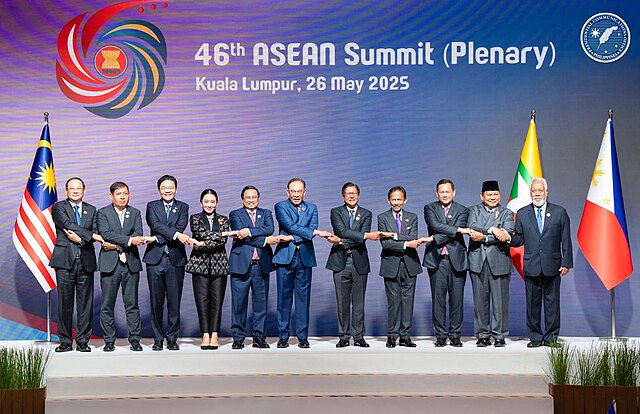August 22, 2025
If you’re trying to “lure” Southeast Asia, dumping tariffs on one side and spraying defense packages on the other isn’t exactly poetic. It’s more like trying to woo a friend with a love letter in one hand and a bill in the other.
Take the US-ASEAN Business Council’s blockbuster delegation to Manila, its largest ever, with direct emphasis on aerospace, defense, and industrial presence rather than development or trade collaboration. It’s less a heartfelt embrace and more a: “Trust us, or this jet might just land elsewhere.”
Contrast that with firms relocating operations to Indonesia, not for free land or subsidies, but to dodge punitive U.S. tariffs imposed on Chinese goods. With Indonesian duties around 19%, still high but nowhere near the 30-plus percent being threatened elsewhere, global manufacturers are pragmatically hedging risk, not pledging loyalty. This shift alone has sent industrial real estate prices soaring, even as the nation posts a respectable 5.12% Q2 GDP gain.
Now, let’s talk big-picture economics. Trade isn’t just about the now, it’s about shaping tomorrow’s corridors. With U.S.–ASEAN trade valued near $476 billion in 2024, the U.S. remains a heavyweight partner, not just rhetorically, but financially. Yet, ASEAN’s own blueprint, unveiled this spring, calls for deeper integration, freer movement, and infrastructural interoperability, aiming to become the world’s fourth-largest economy by 2045. It seems ASEAN is increasingly keen to manage its destiny, on its own terms.
And let’s not forget the politics. Malaysia’s PM Anwar Ibrahim recently declared that “this trade war is not a passing storm” during an ASEAN ministers’ meeting. His warning rings loud: ASEAN can’t afford to become the ball in a geopolitical ping-pong match. Regional unity? Far from just ideal, a matter of survival.
ASEAN isn’t sidelined—it’s sizing up both the U.S. and China, and reinforcing its internal coherence. If America wants influence, it may have to choose between cold leverage and warm partnership. Tariffs and hub missions only go so far. In Krugmanesque terms, you don’t build alliances with threats. You build them by building trust, and at present, ASEAN is clearly open, but only to steady hands and long-term vision.
Sources
- US–ASEAN Business Council’s mission to Manila
https://press.usasean.org/us-asean-business-council-leads-largest-ever-business-delegation-to-manila
https://press.usasean.org/us-asean-business-council-concludes-largest-ever-aerospace-defense–security-mission-to-the-philippines - Indonesia attracts Chinese firms to avoid U.S. tariffs; GDP growth & FDI trends
https://www.reuters.com/world/china/chinese-investors-eyeing-indonesia-avoid-us-tariffs-tap-local-market-2025-08-14/ - Trade overview: U.S.–ASEAN and ASEAN’s integration strategy
https://www.cfr.org/backgrounder/what-asean
https://www.reuters.com/world/asia-pacific/asean-unveils-strategic-plan-integrate-its-economies-2025-05-27/ - Malaysia’s warning about trade war and unity call
https://apnews.com/article/81af74f2f3f13881950d44ed4dd9b4fd








